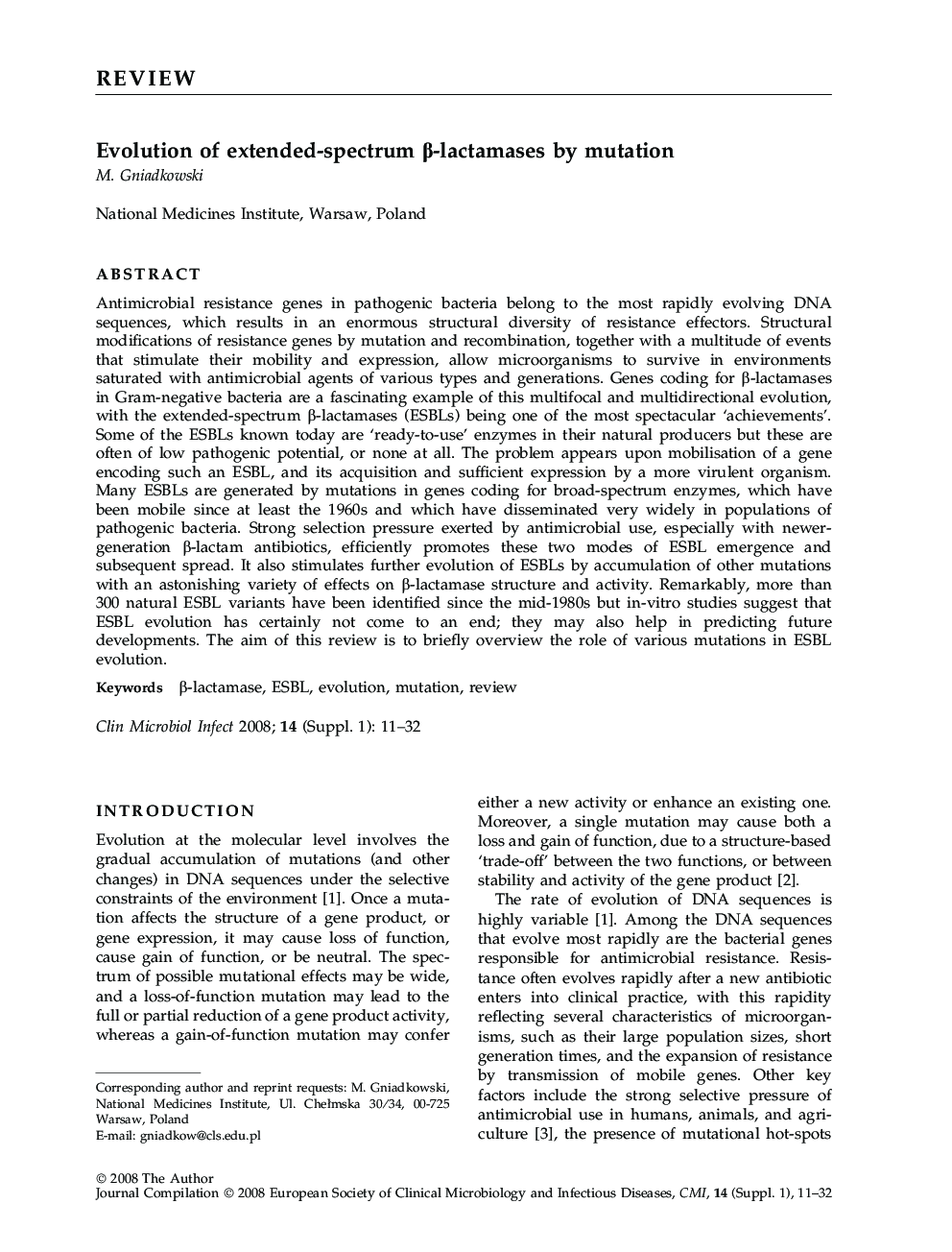| Article ID | Journal | Published Year | Pages | File Type |
|---|---|---|---|---|
| 3398732 | Clinical Microbiology and Infection | 2008 | 22 Pages |
ABSTRACTAntimicrobial resistance genes in pathogenic bacteria belong to the most rapidly evolving DNA sequences, which results in an enormous structural diversity of resistance effectors. Structural modifications of resistance genes by mutation and recombination, together with a multitude of events that stimulate their mobility and expression, allow microorganisms to survive in environments saturated with antimicrobial agents of various types and generations. Genes coding for β-lactamases in Gram-negative bacteria are a fascinating example of this multifocal and multidirectional evolution, with the extended-spectrum β-lactamases (ESBLs) being one of the most spectacular ‘achievements’. Some of the ESBLs known today are ‘ready-to-use’ enzymes in their natural producers but these are often of low pathogenic potential, or none at all. The problem appears upon mobilisation of a gene encoding such an ESBL, and its acquisition and sufficient expression by a more virulent organism. Many ESBLs are generated by mutations in genes coding for broad-spectrum enzymes, which have been mobile since at least the 1960s and which have disseminated very widely in populations of pathogenic bacteria. Strong selection pressure exerted by antimicrobial use, especially with newergeneration β-lactam antibiotics, efficiently promotes these two modes of ESBL emergence and subsequent spread. It also stimulates further evolution of ESBLs by accumulation of other mutations with an astonishing variety of effects on β-lactamase structure and activity. Remarkably, more than 300 natural ESBL variants have been identified since the mid-1980s but in-vitro studies suggest that ESBL evolution has certainly not come to an end; they may also help in predicting future developments. The aim of this review is to briefly overview the role of various mutations in ESBL evolution.
